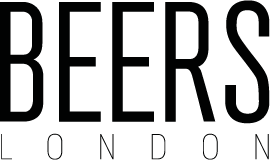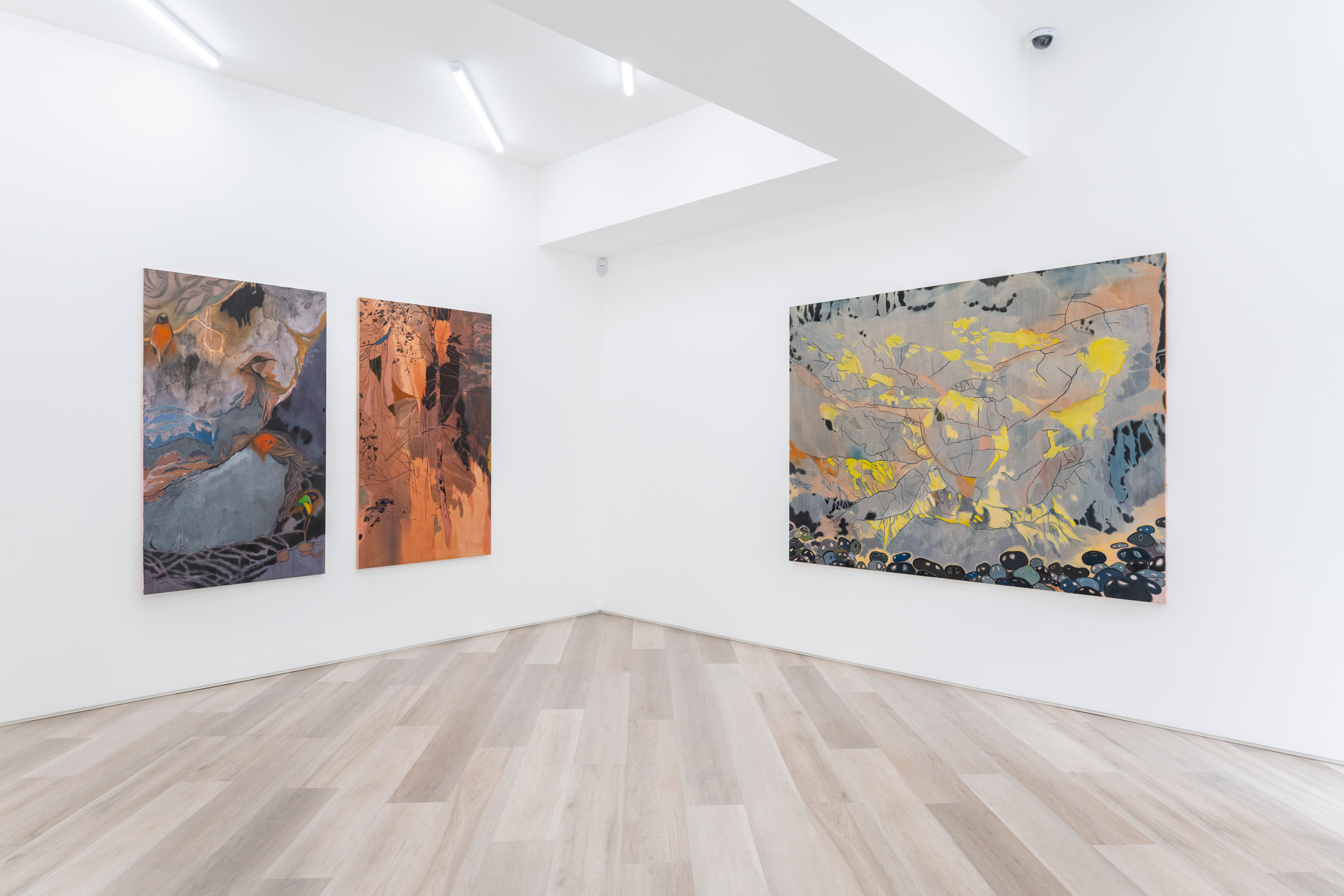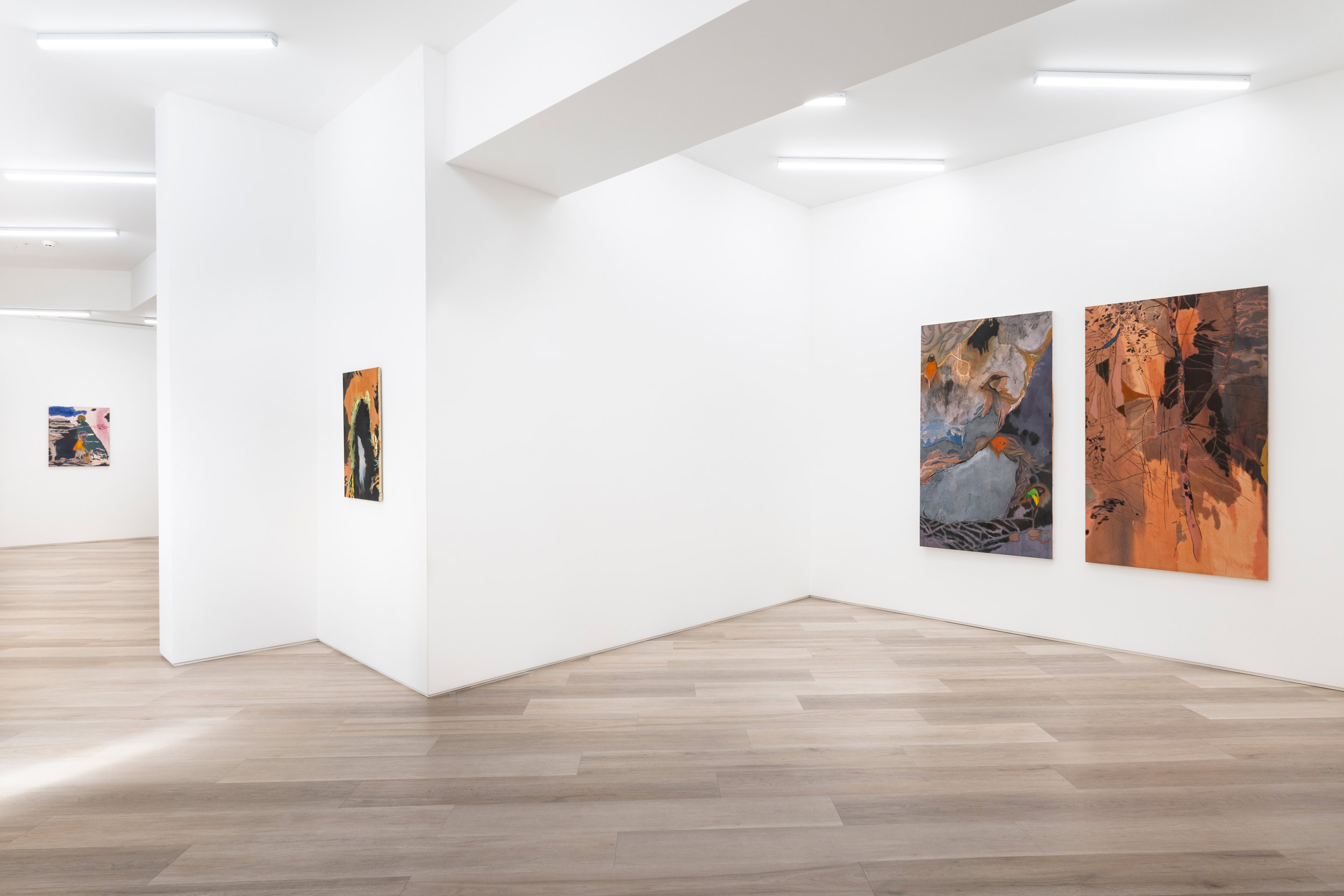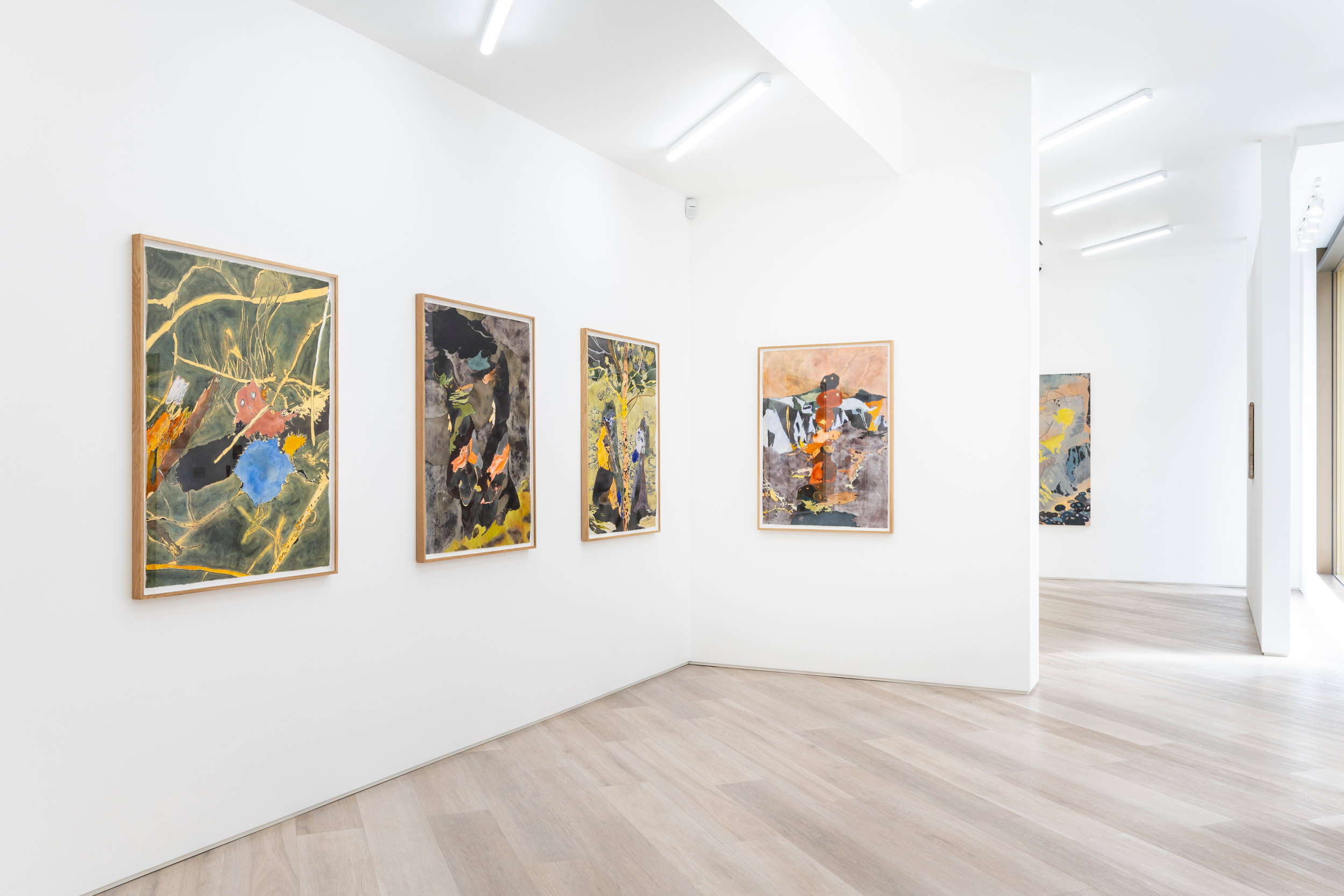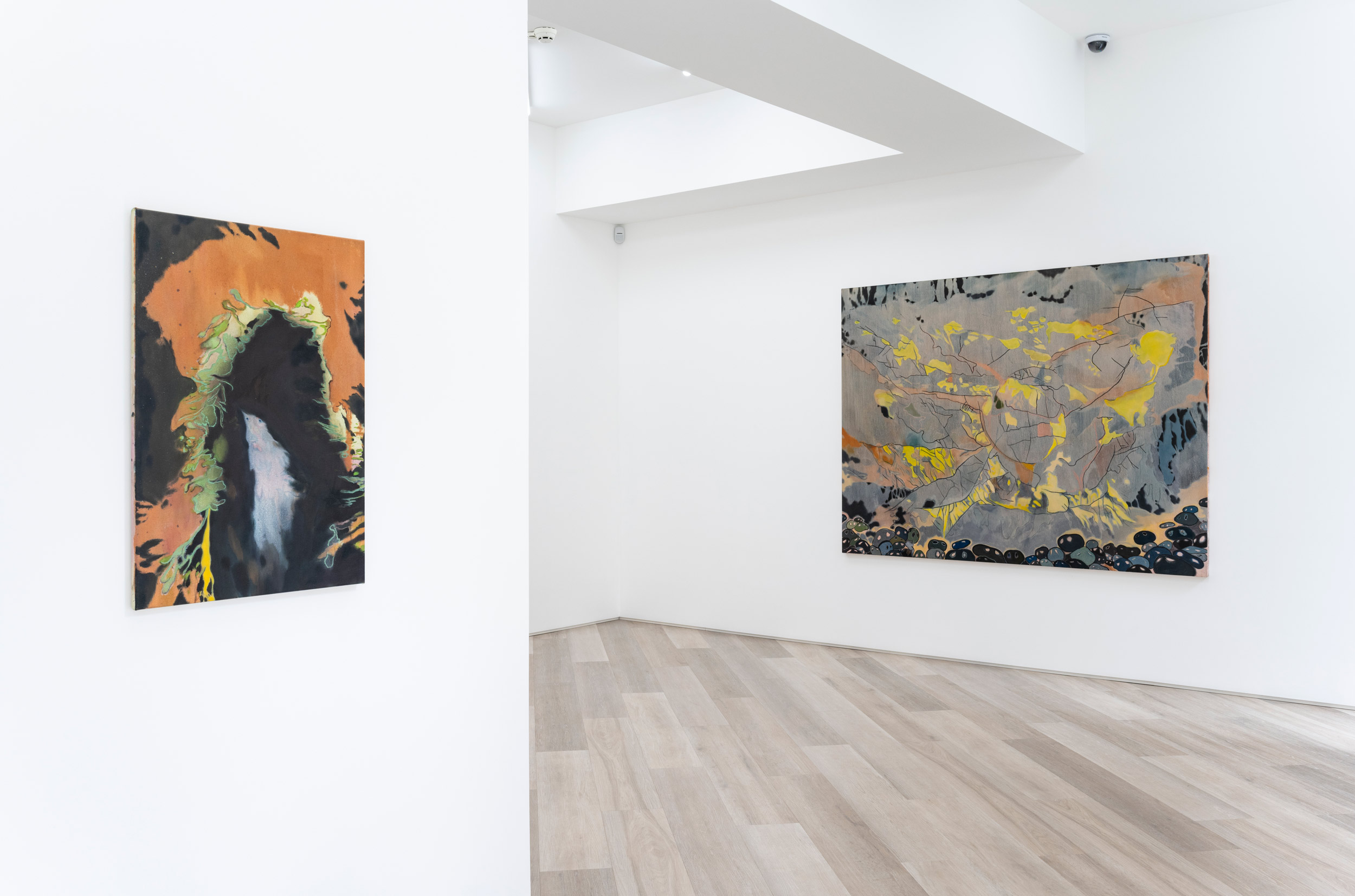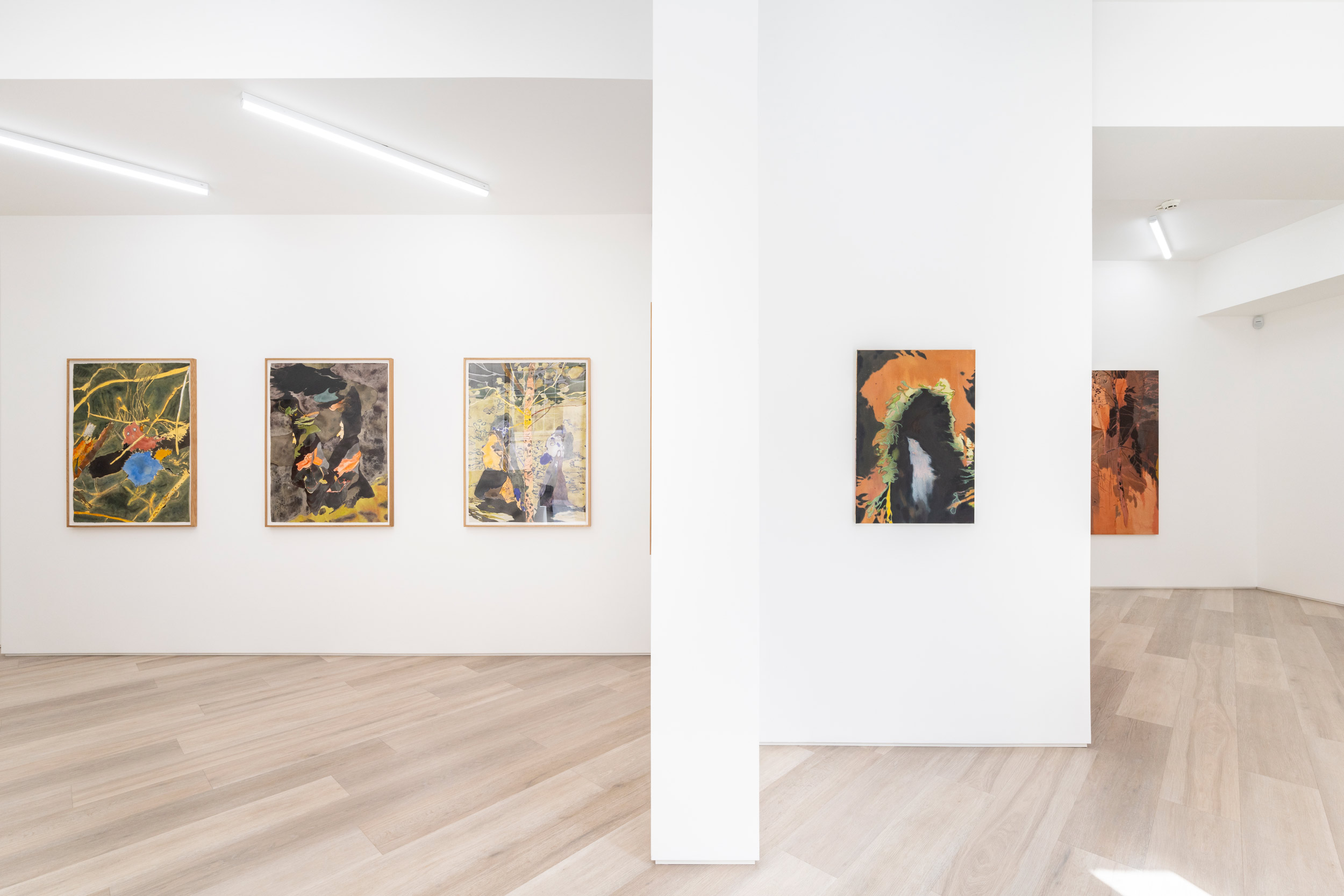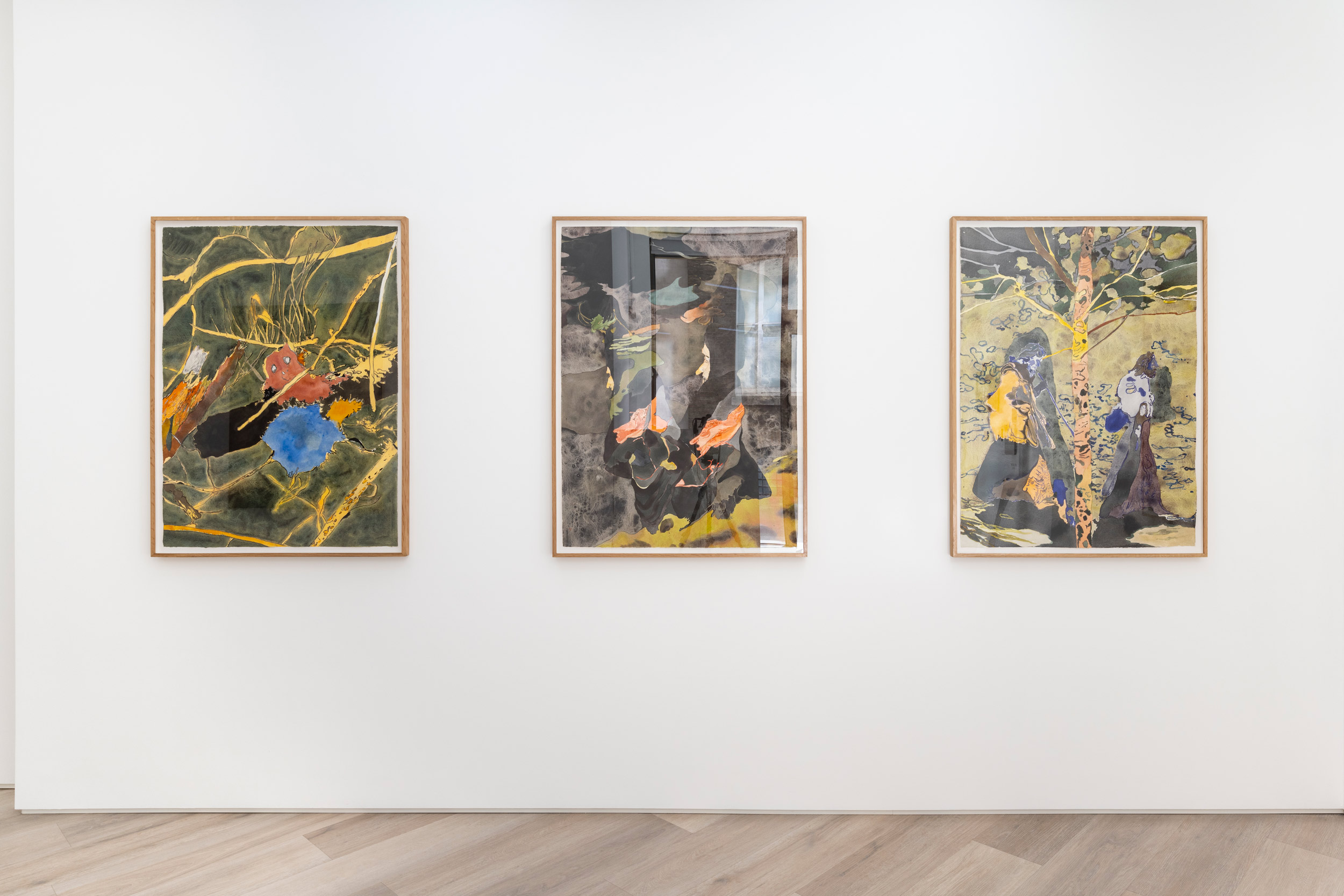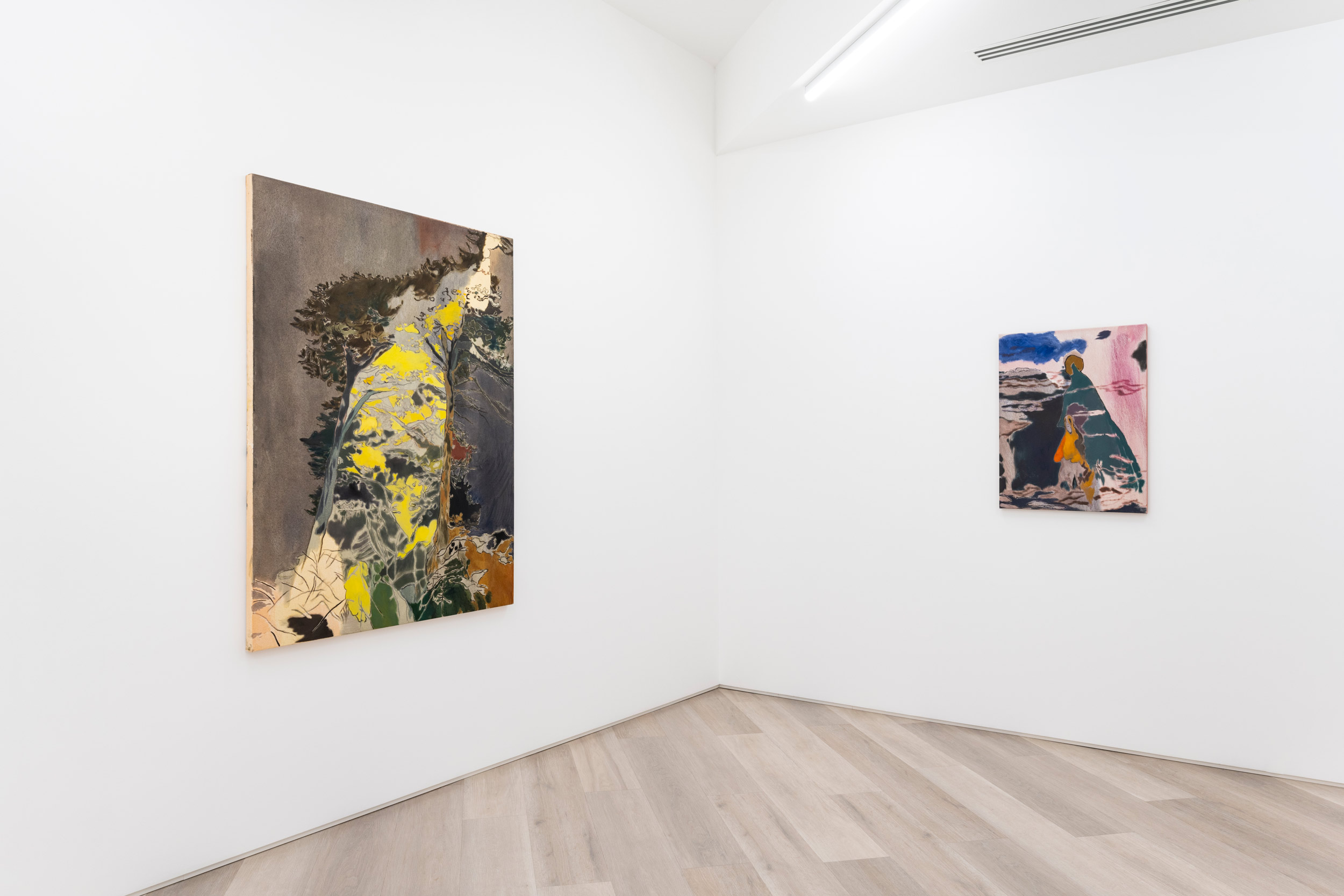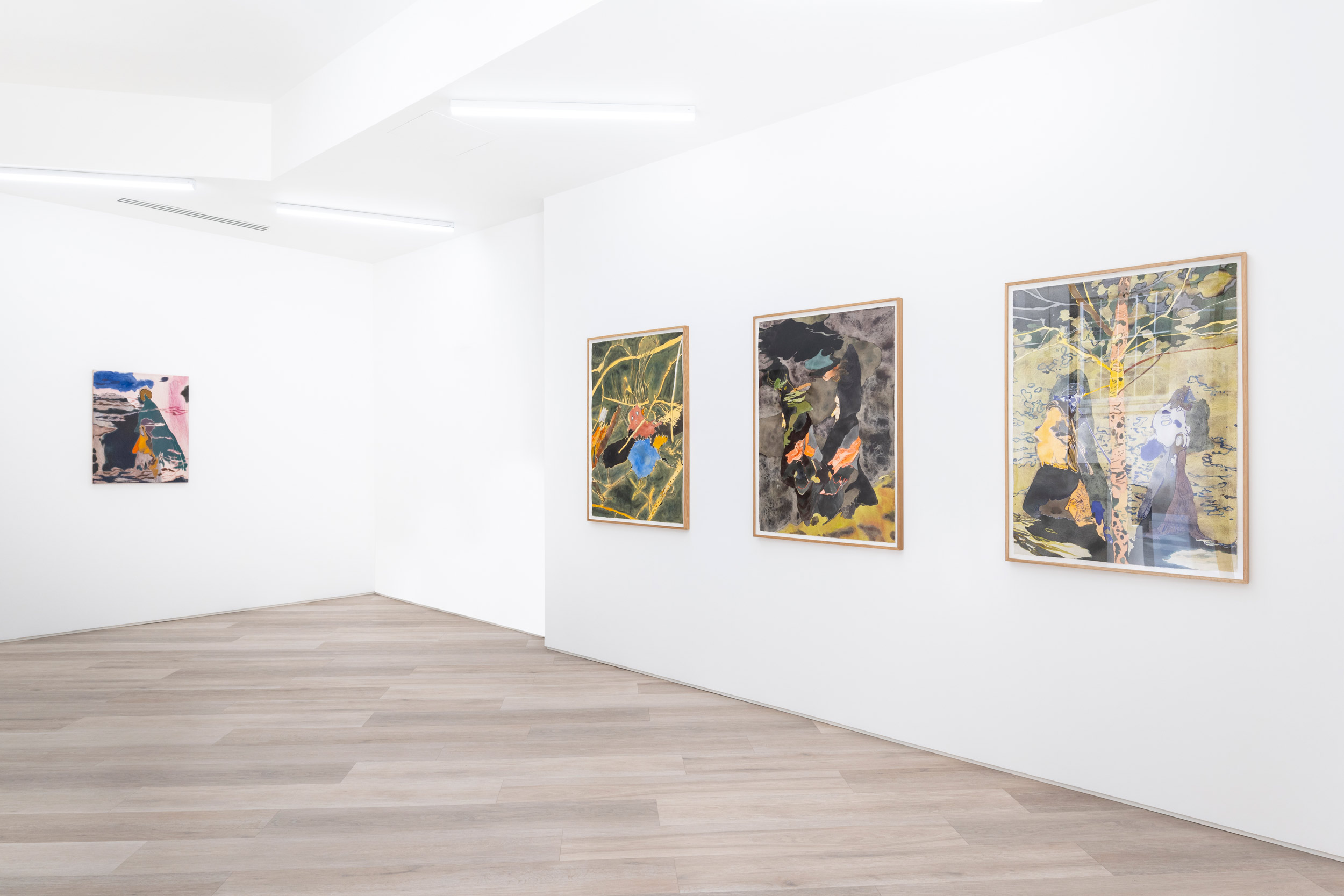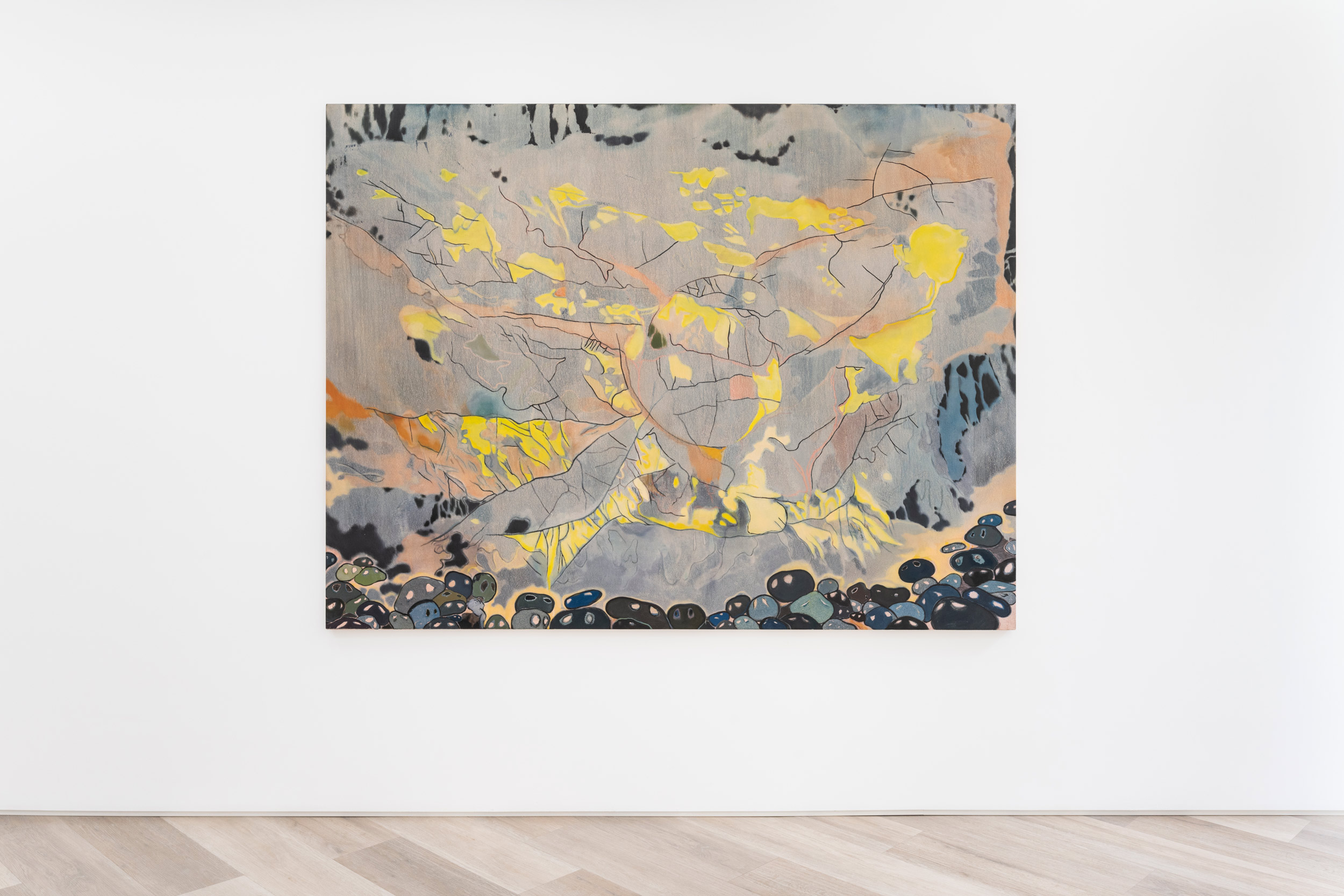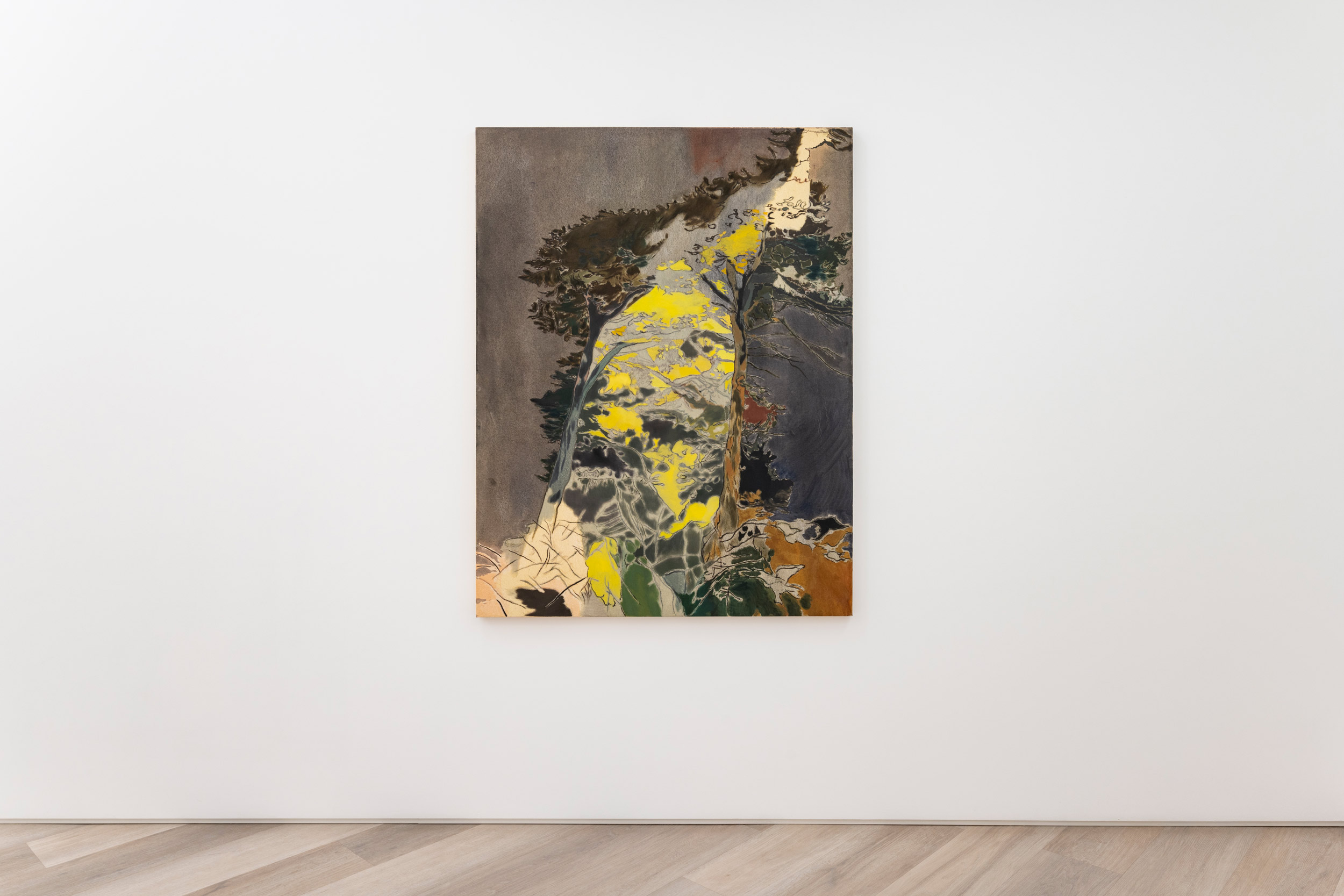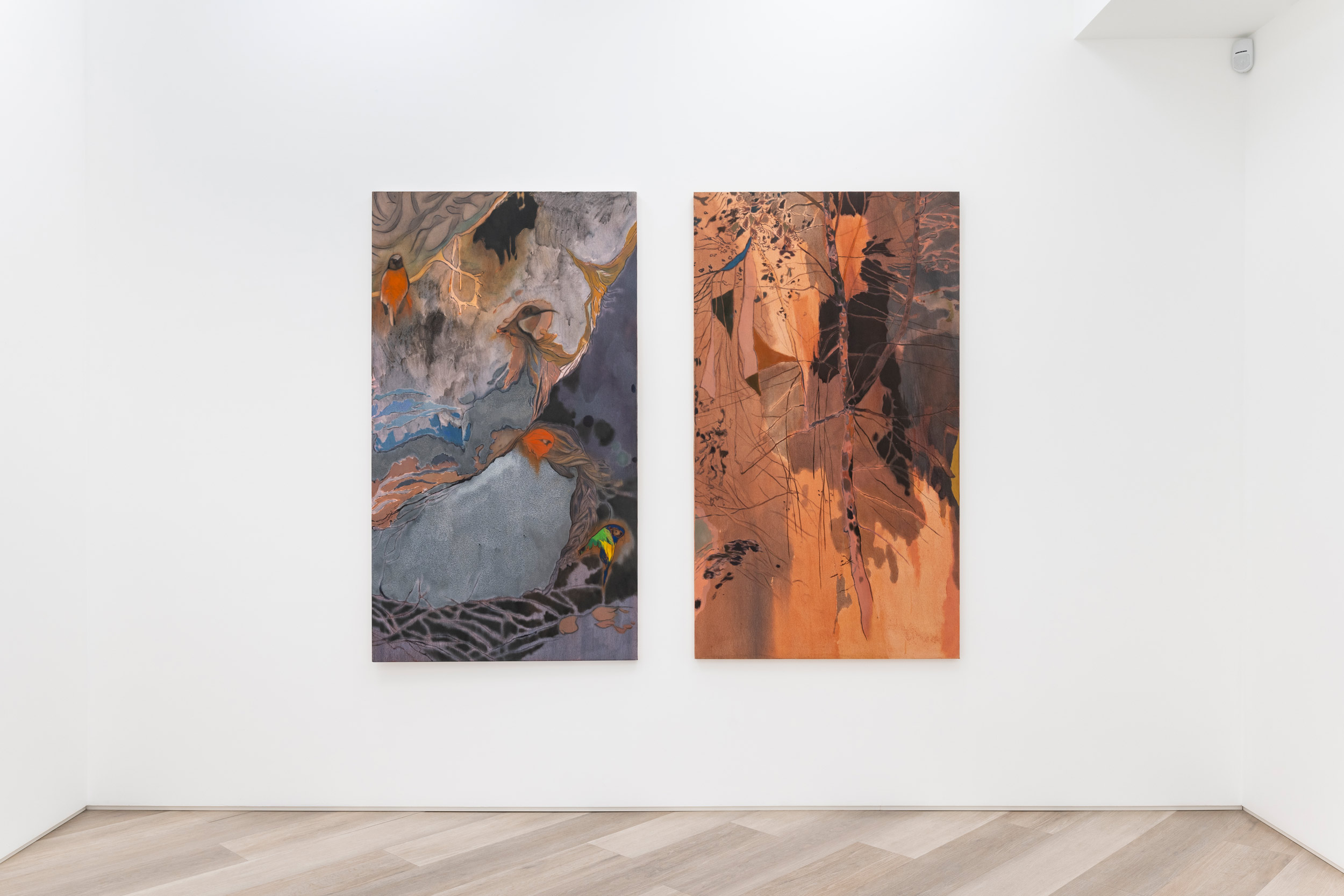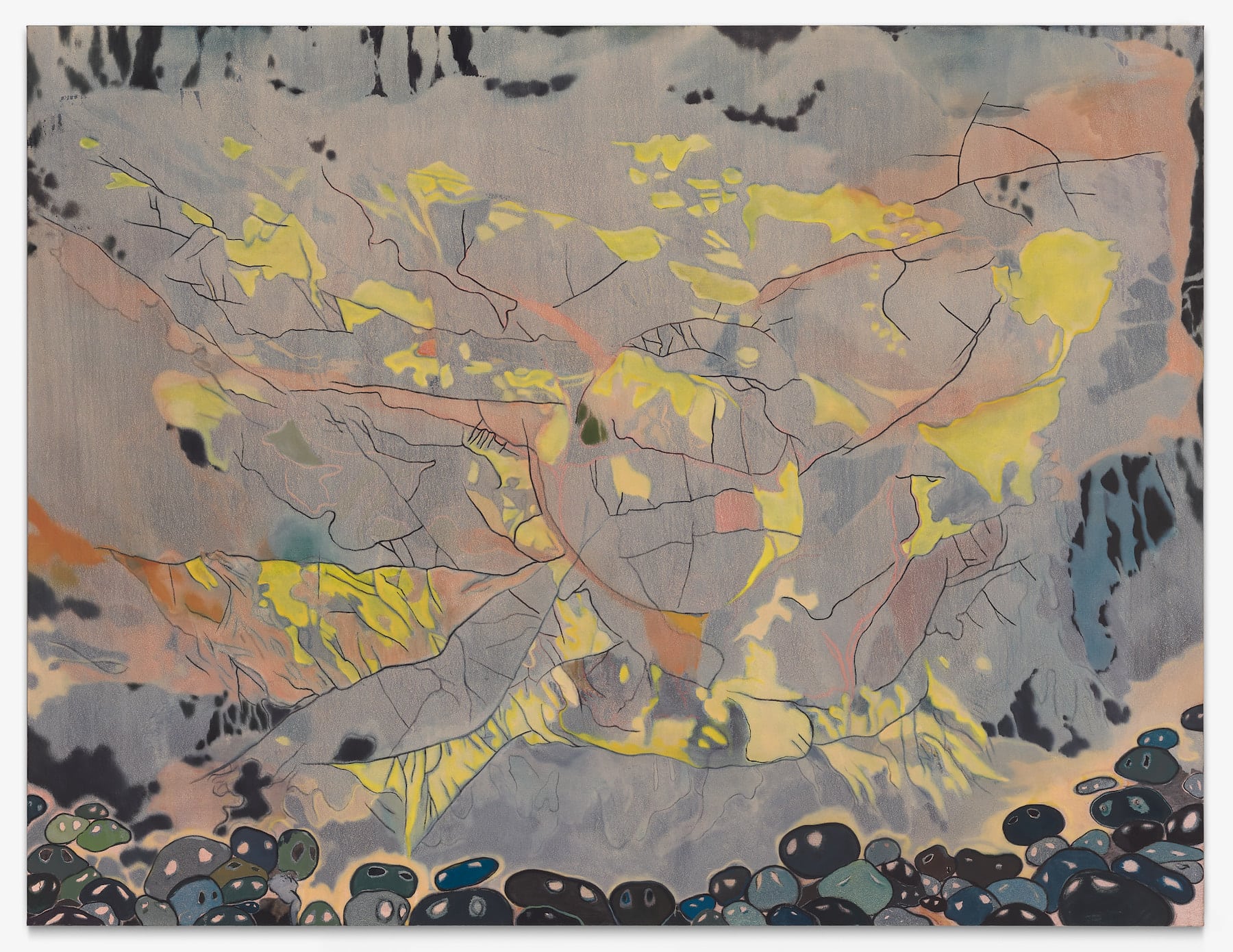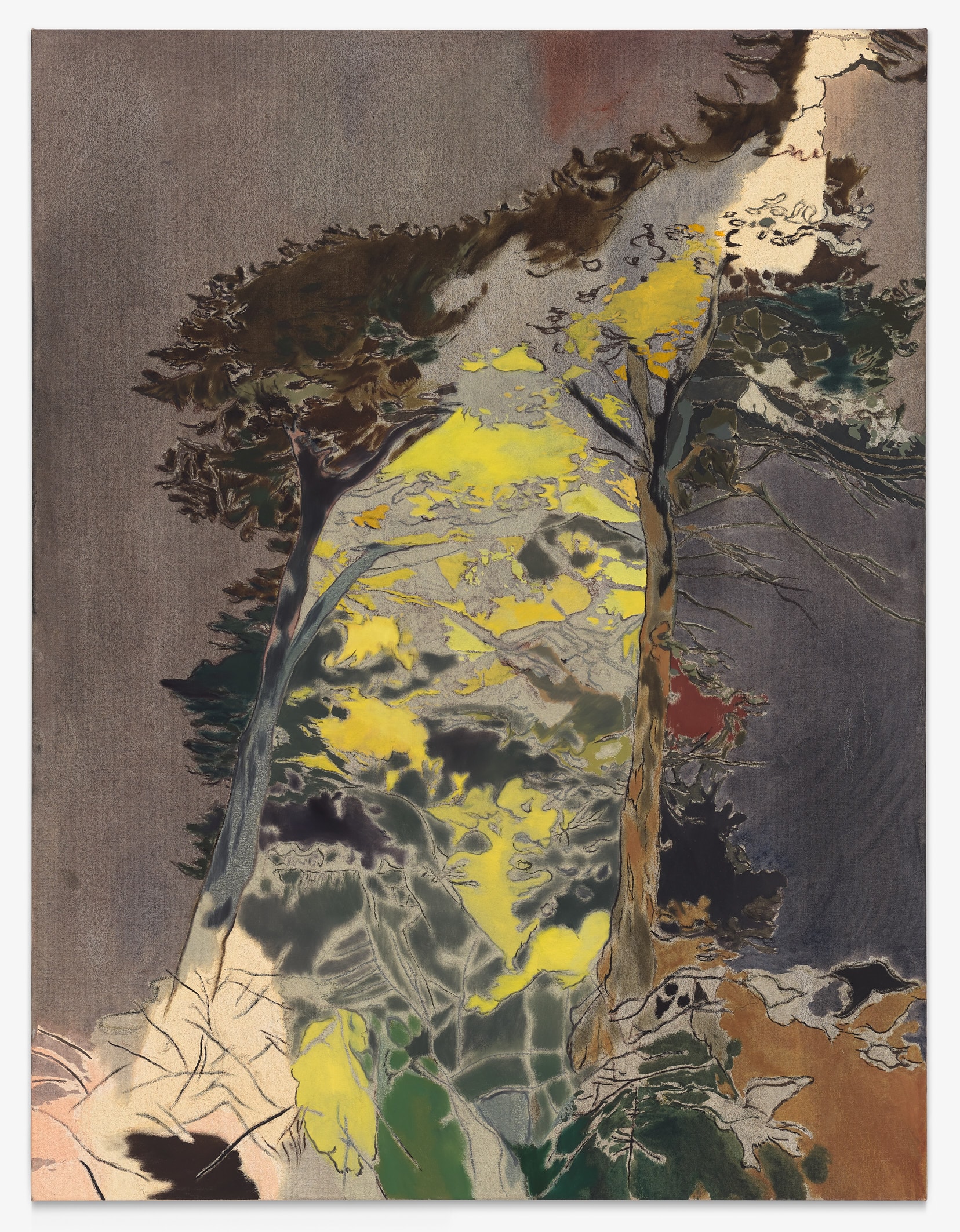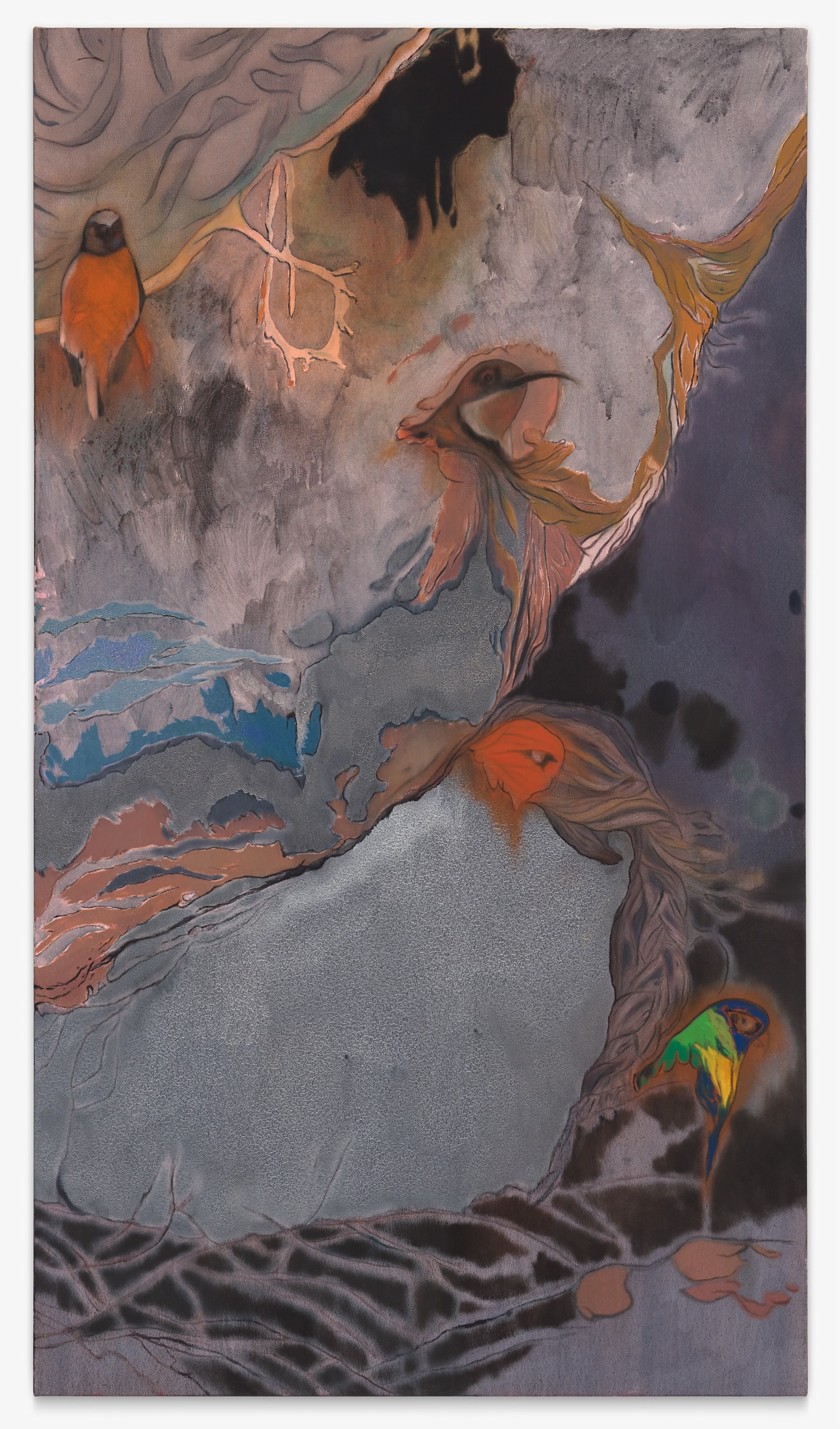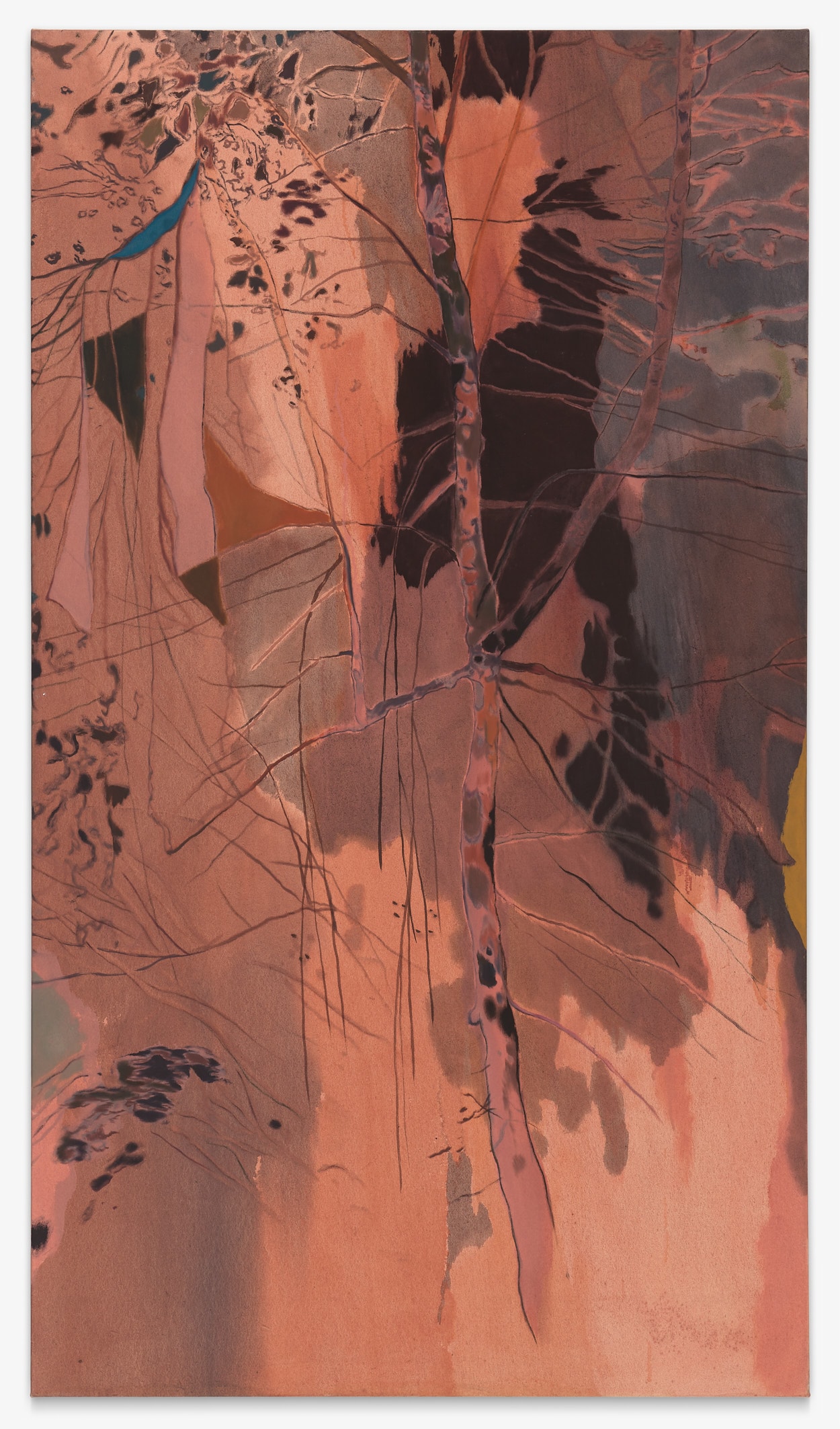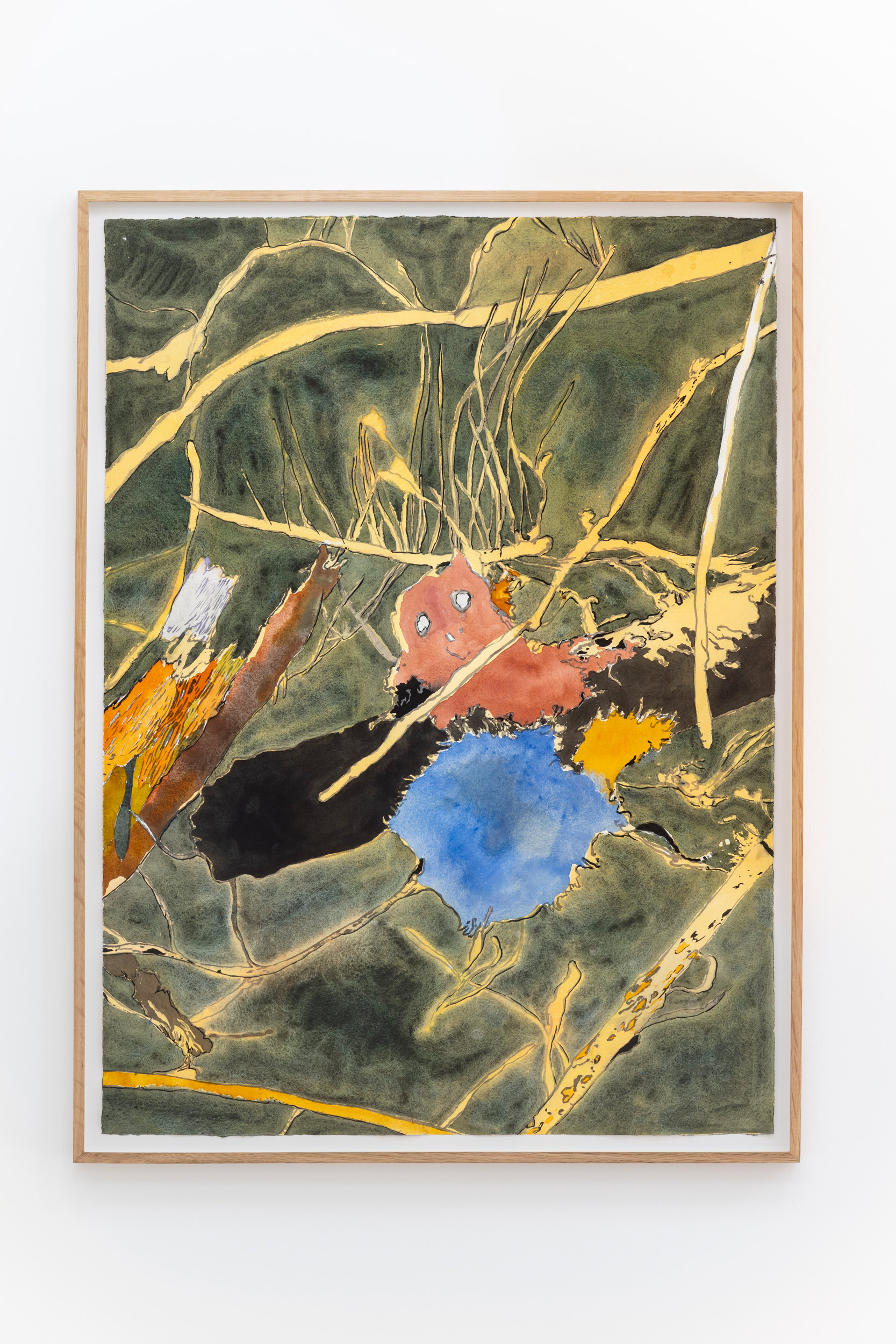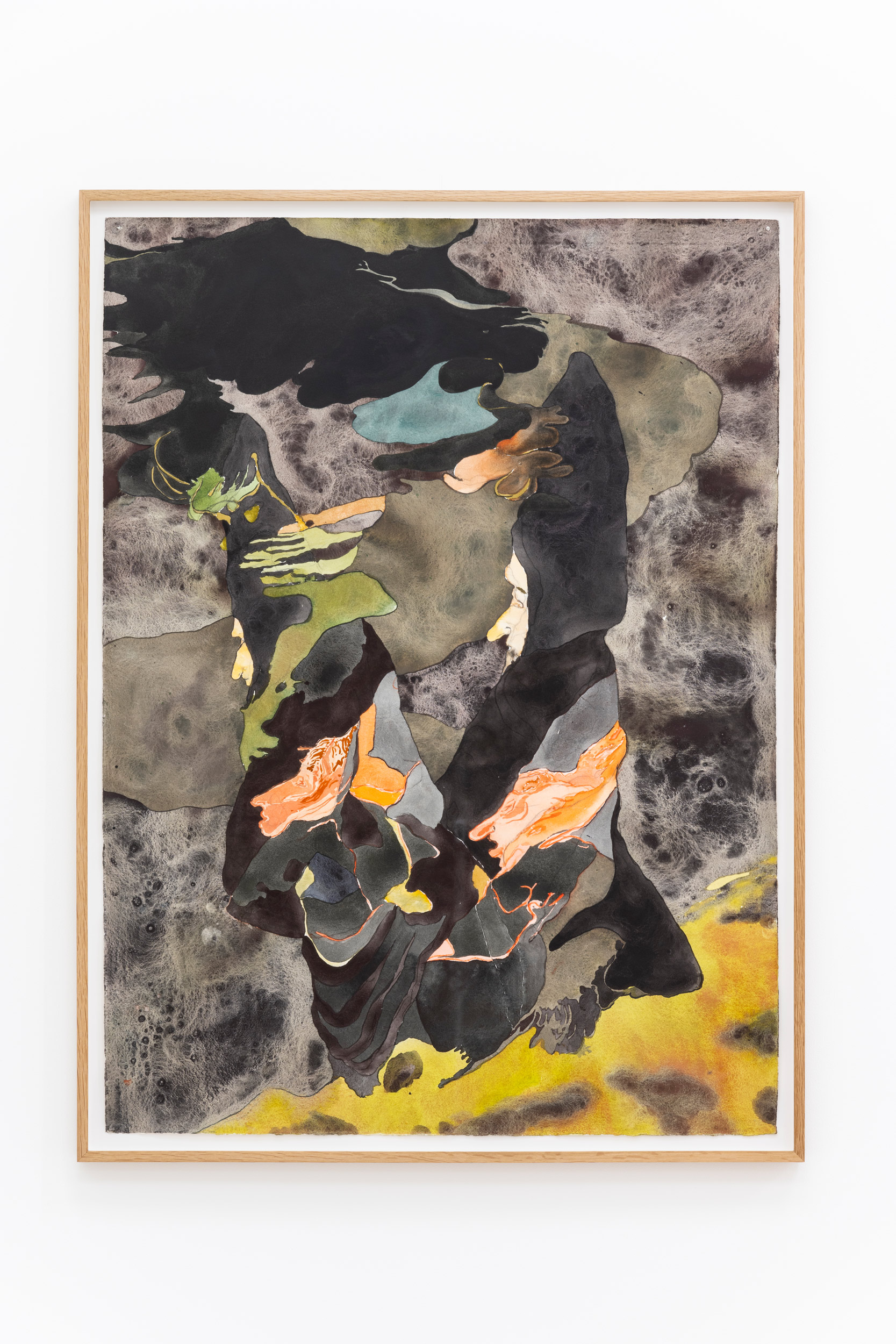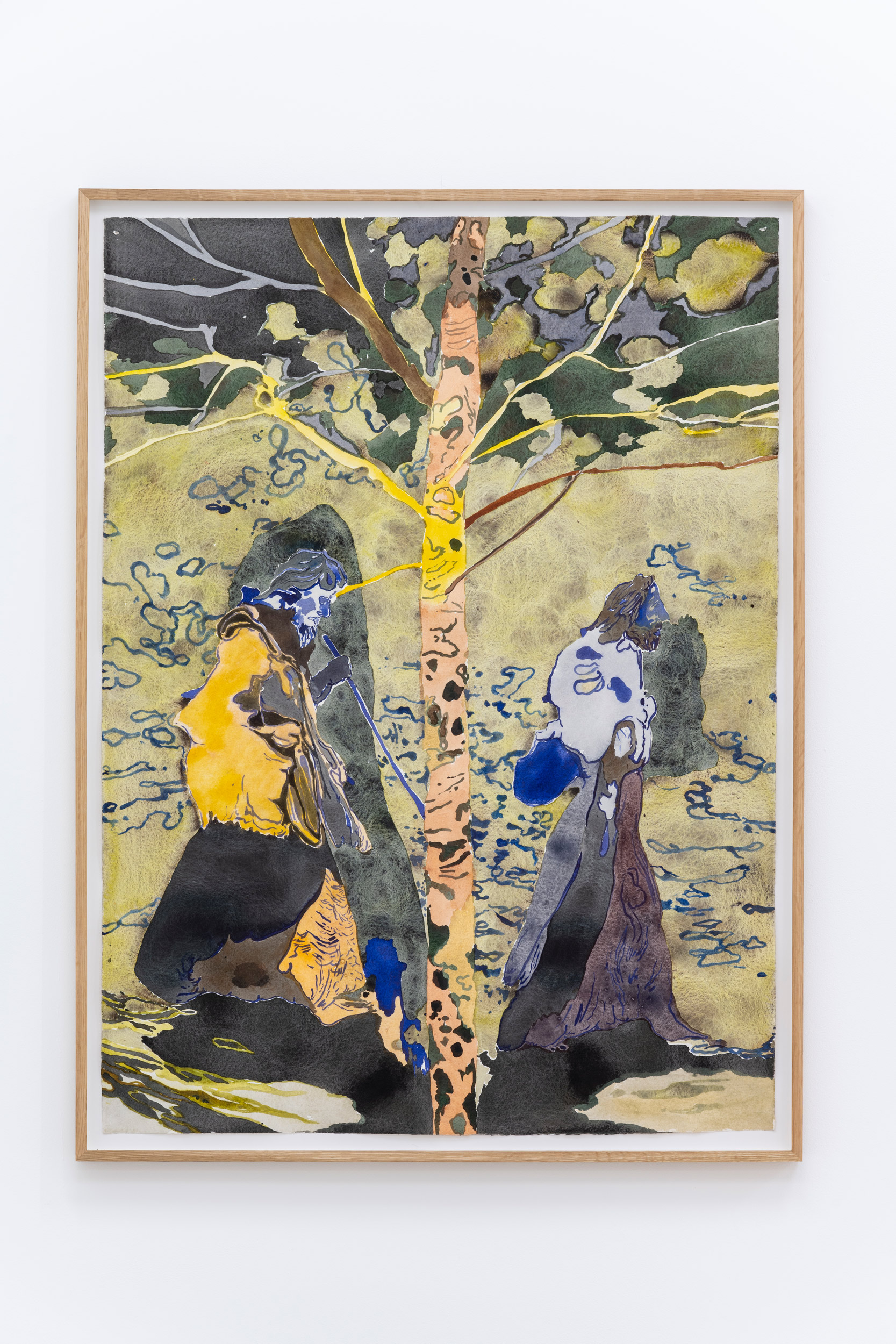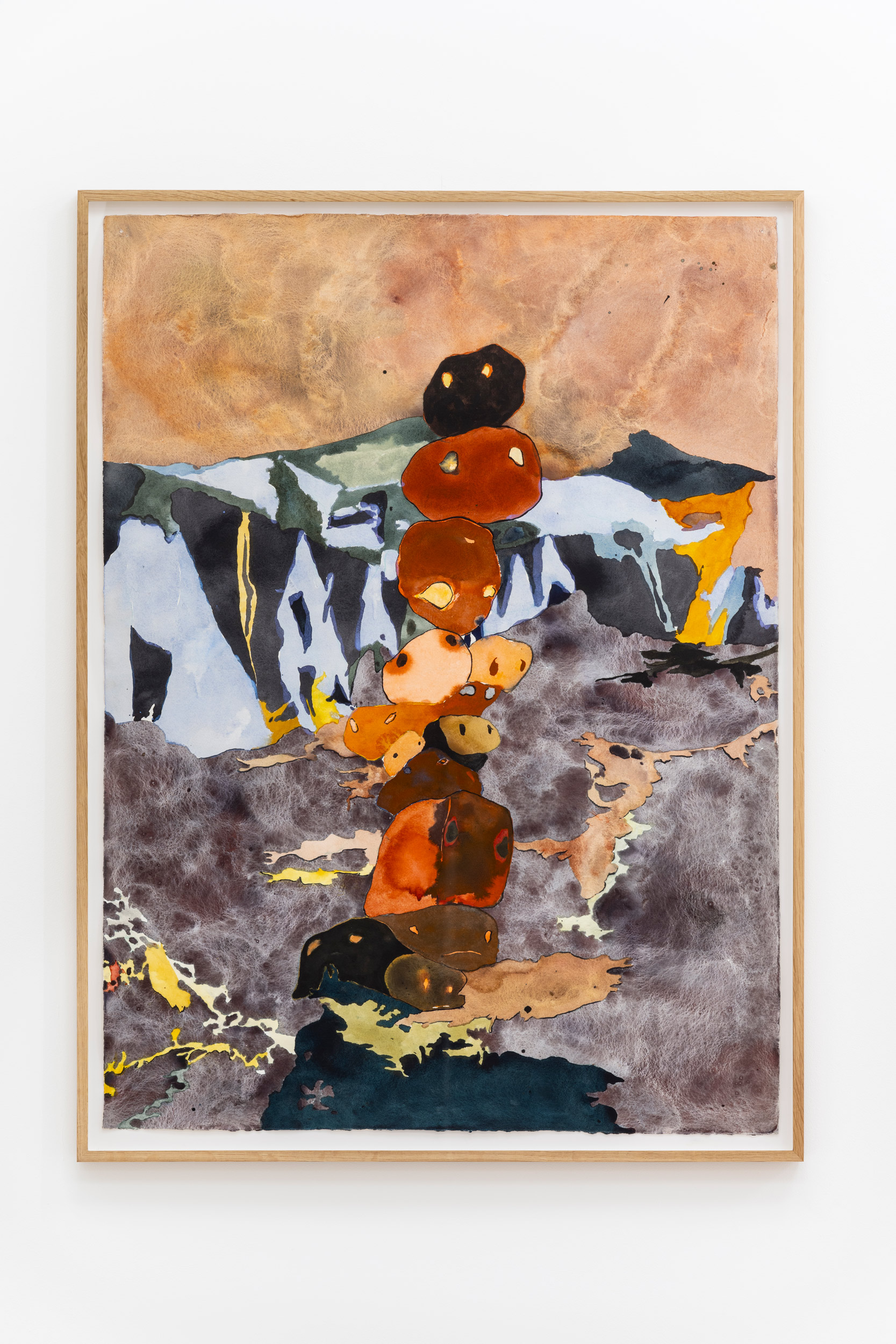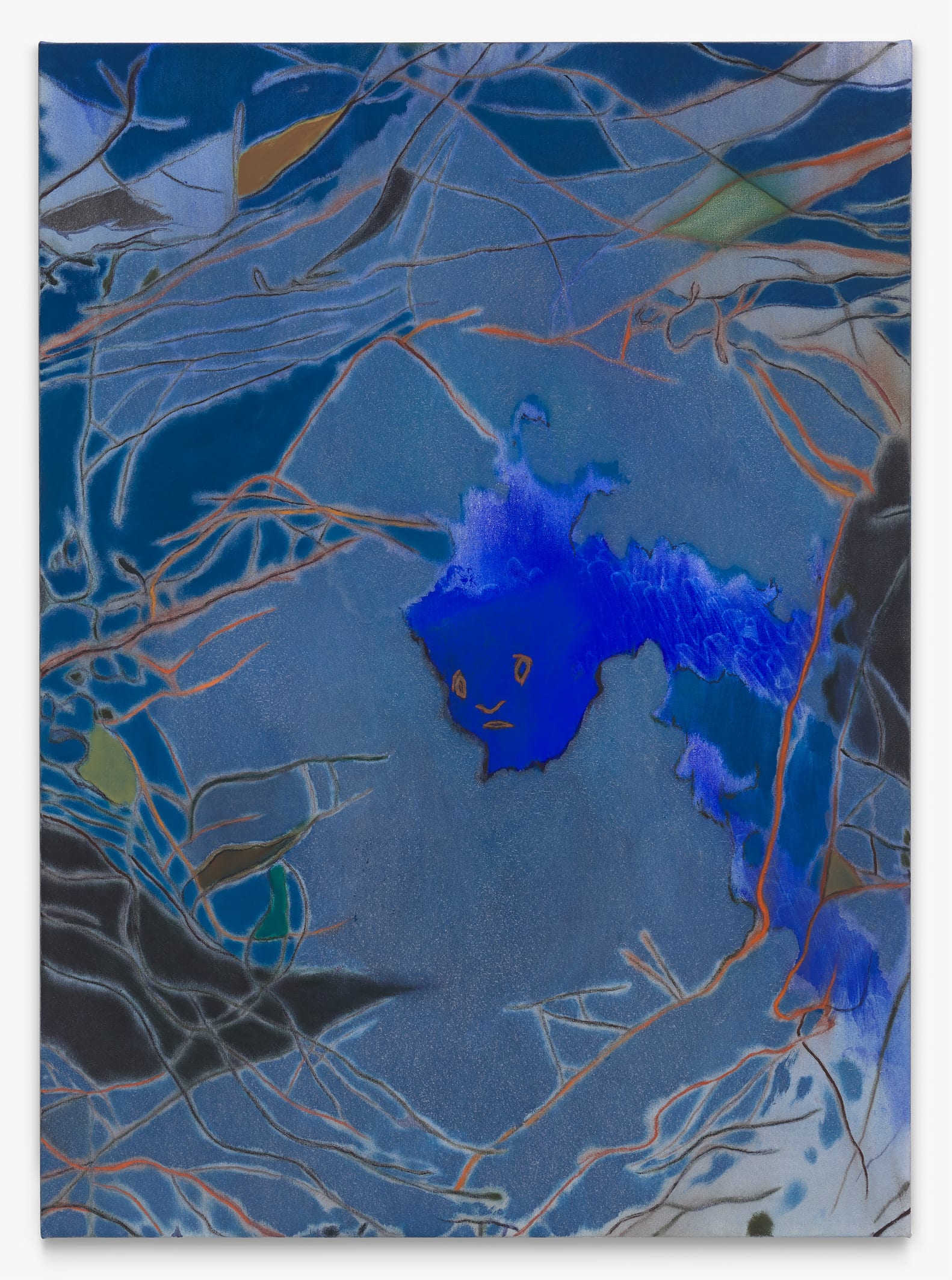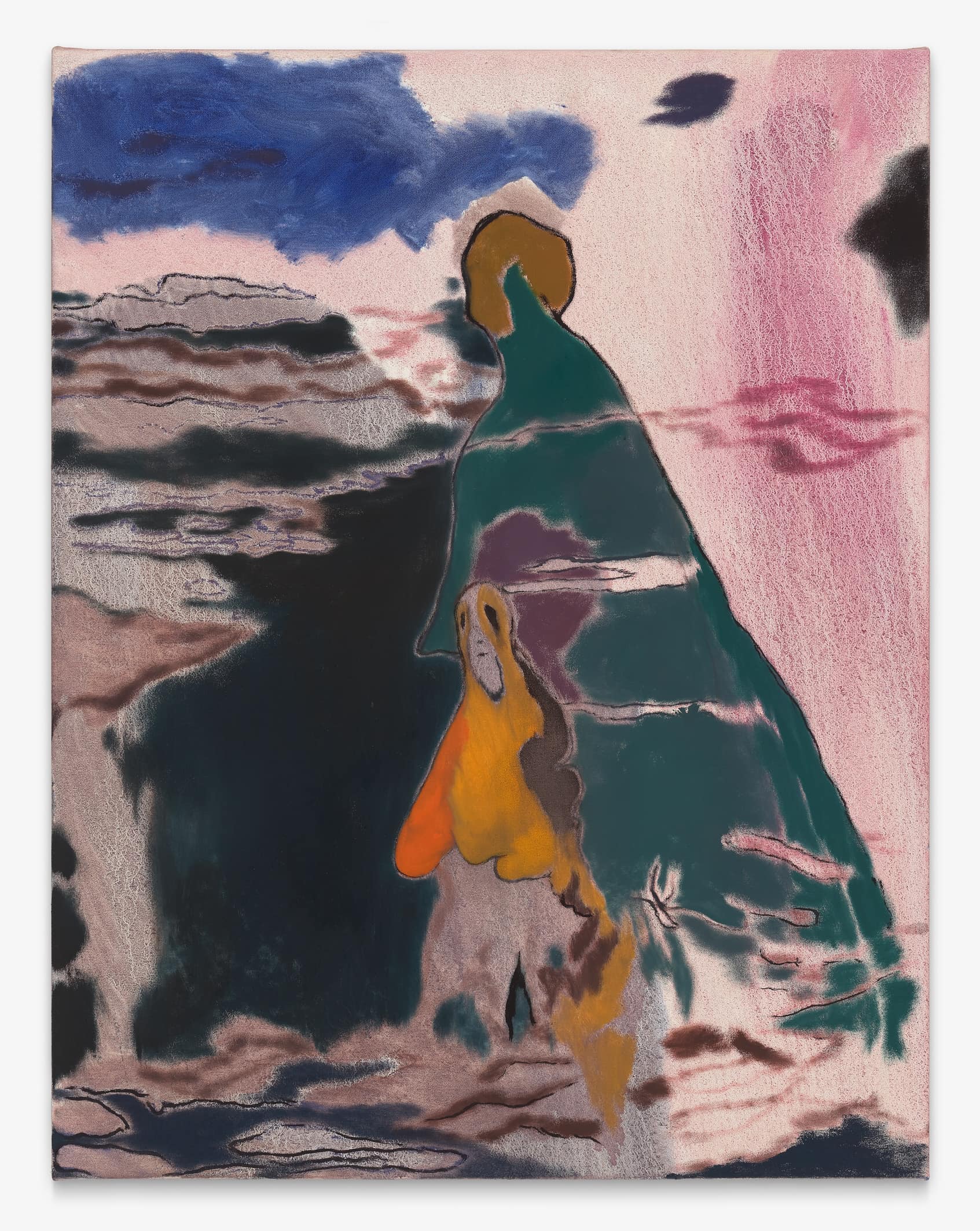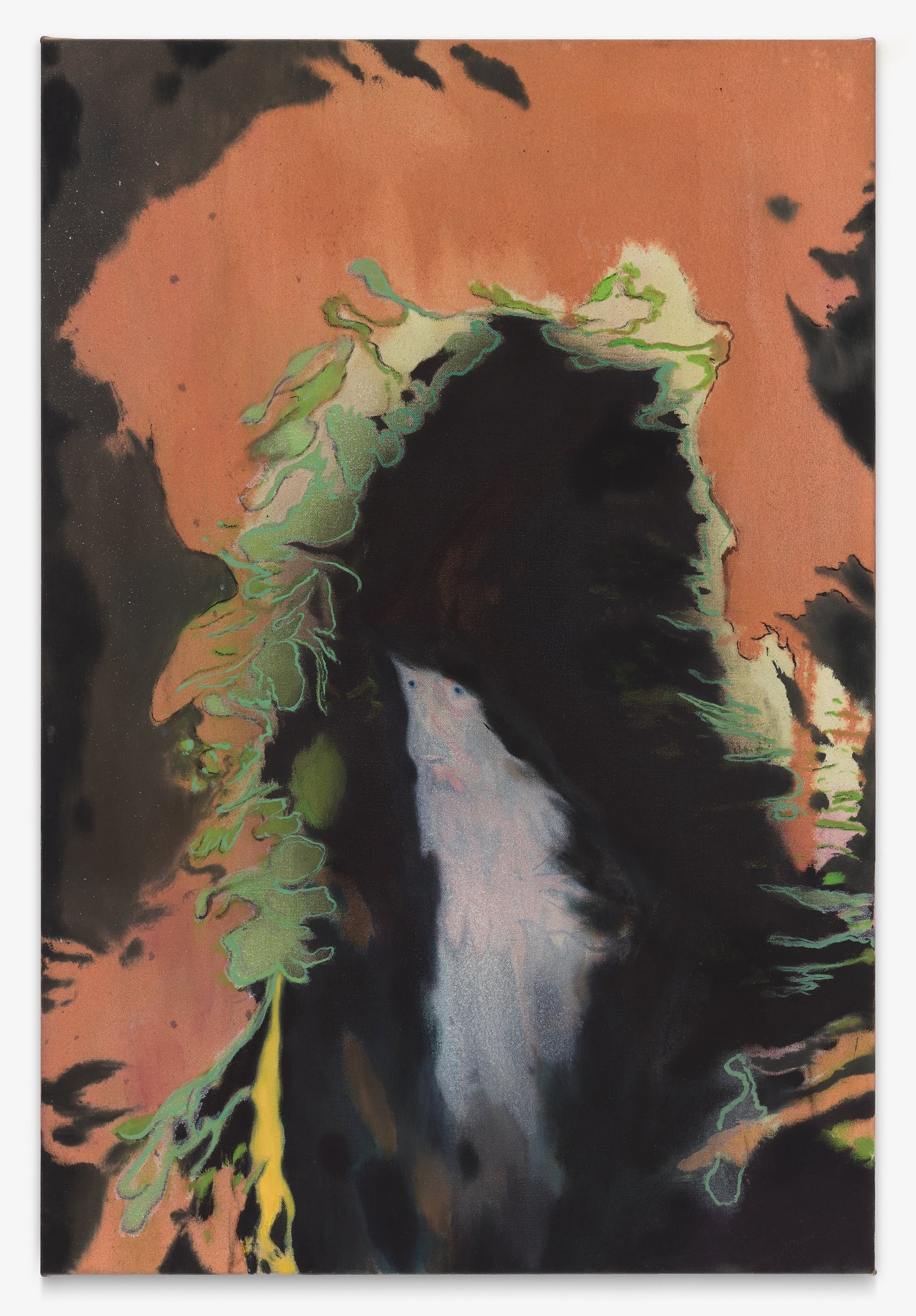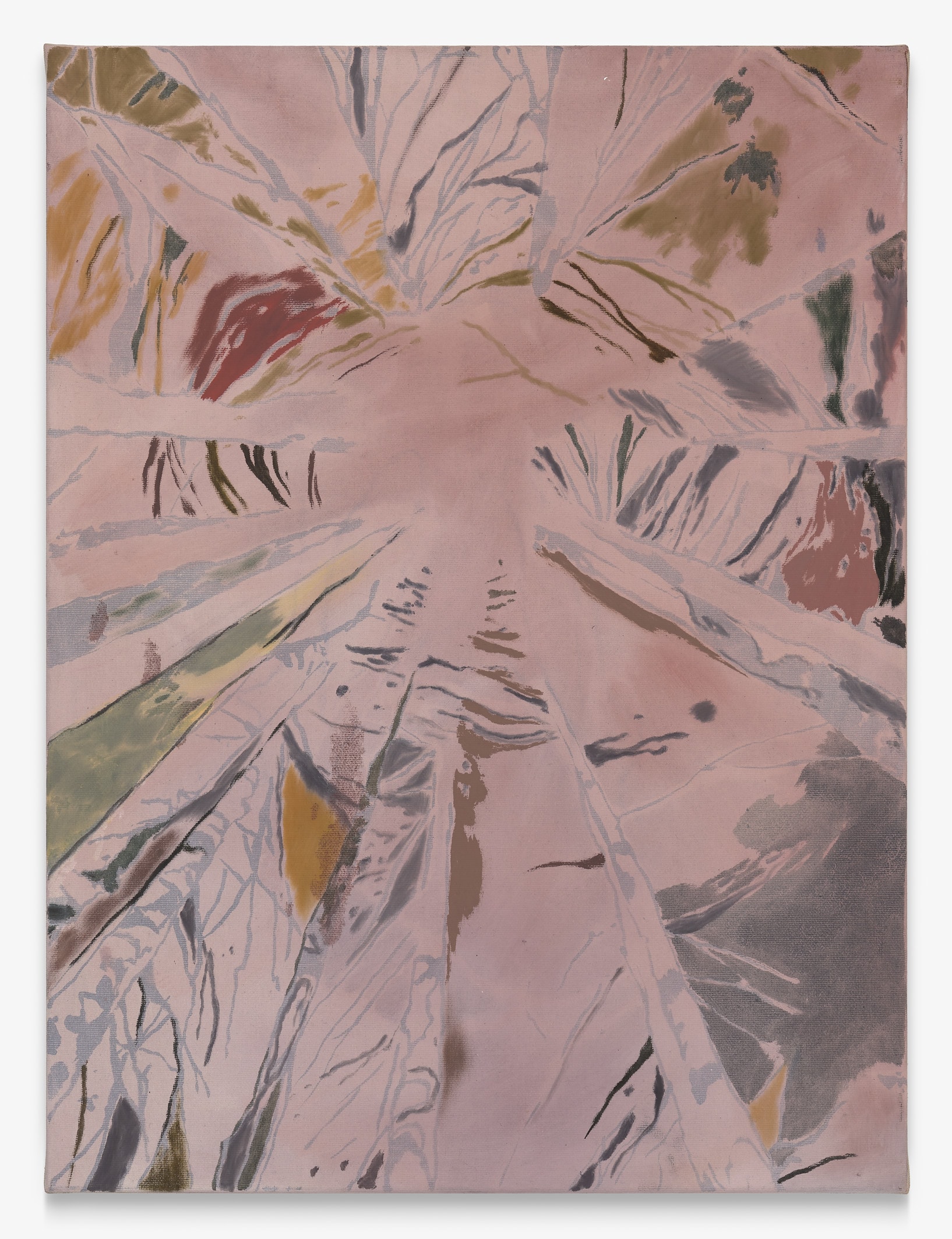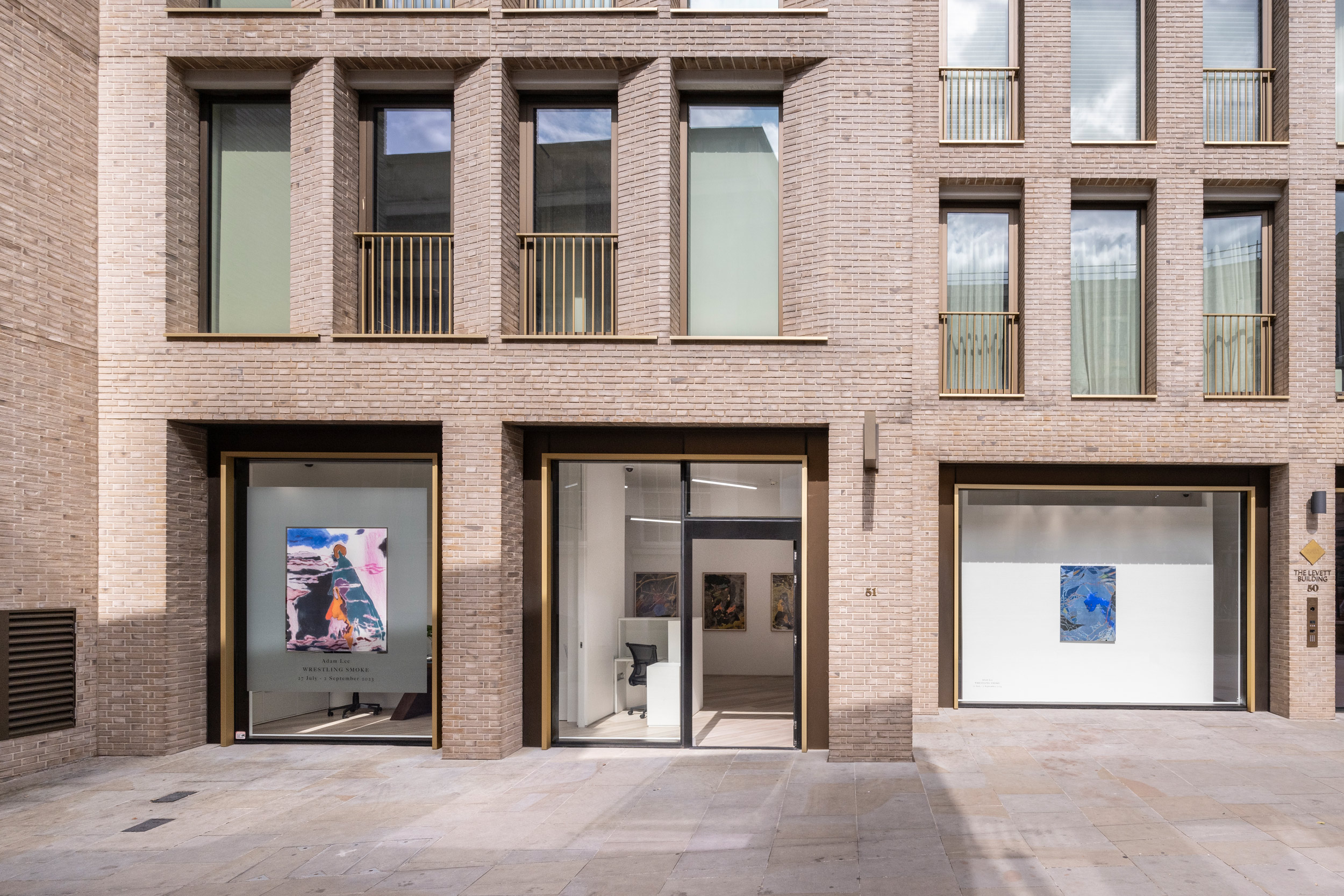Preview: Thursday 27 July 2023 (6-8pm)
Exhibition: 28 July – 2 September 2023
PDF catalogue of work
Essay by David Hansen
“I’m fascinated by the idea that humans have always attempted to map out their world at any given time in history,” says Australian painter Adam Lee, as he prepares for his summer solo exhibition with BEERS London. “It is a reflection of the human spirit to comprehend the unknowableness of the world, and the title Wrestling Smoke alludes to the notion of grappling with something which is impossible to fully grasp.”
Wrestling Smoke presents new paintings and watercolours that consider the human desire throughout history to understand the world evolving around us. Lee is drawn to questions of a deep, human nature, often talking about humankind’s journeys toward inaccessible or unknowable idea(l)s, be they based on religion, the sublime natural world, or deep dives into the personal and psychological. Wrestling Smoke, his fourth solo with BEERS, is no different, attempting to charter, through an artist’s process, the very unchartable characteristics of our natural world.
The topic is indeed topical, as the world heads toward irreversible disrepair. And Lee is, in his own right, a sort of big thinker who translates those issues through paint. In that sense, the work is politicized, inasmuch as art has always allowed creatives to tackle incalculable ideology about the natural and supernatural world. As he states: “there is that tendency in humanity to explore the ‘known world’ as a kind of vast realm… to articulate [that] which ultimately eludes us and remains hidden.” Lee is positioned as the nucleus as the natural world spins (uncontrollably) around him. It almost feels as though painting allows him to look inward, to find comfort and control.
In many instances, the microcosmic becomes macrocosmic. A true ‘thinking artist’, Lee’s inspiration culls from his own sense of “the spiritual” but also a compendium of theory, philosophy, art-history, and literature he frequently refers to. Often, that which is intensely personal to the artist becomes representative of the larger picture. In Naming Birds, Lee seems to dissociate himself from truth or factuality and make clear that he is entering a fantastical territory, where the line between accuracy and his own florid imagination takes over. Much of Lee’s work plays on this dreamlike accounting of the natural world. And Naming Birds is a sort of tribute to his daughter Abigail, who at 11 years old has become “an avid bird watcher who knows all the names and calls of our local bird life”. The painting weaves his daughter’s imagery swirled along patterns based on his wife’s hair.
In Vapour, Lee confronts his own self-portrait while sick with Covid. “The idea of the self as a vapour or a ghost is a reminder of our impermanence… in contrast to the immensity of the world we grapple to understand.”
Weeping Tree depicts a weeping birch tree from his mother’s garden, planted many years ago as a kind of altar. And many of these works seem somehow totemic, or imbued with an otherworldly presence. Just as how Two Trees, a Door depicts two huge pines Lee passes every day on his way to the studio. “The way these lean toward each other always appears to me like a huge doorway into another realm,” he states. And this notion of standing at the precipice of sublimity or a ‘Greater Beyond’ is characteristic of his developing oeuvre over the past number of years.
Some will notice a recurring motif of crying or weeping stones, appearing often as ghoul-like or floating baubles that spill across various paintings. In nature, weeping stones (or “hunger stones”) date back to archaic times and were carved into the riverbanks to warn of great drought. One such stone dates back to 1616 and is etched with a warning in German: “Wenn du mich seehst, dann weine” – “If you see me, then weep.” These cyclical ideas resonate strongly with Lee:
I’m intrigued by the tension in this motif – that tears could emerge from something as hard as a stone. While this plays into the [idea] of the natural world as a pulsing, very present thing, I also see it as an apt metaphor for the times we have been living through, and as a form of understanding the residual grief after living through times of plague. The notion that the natural world itself has a voice sounding out with a woundedness accrued over many generations of human presence.
But I also see these stones, paradoxically, as an expression of joy; that despite grief, the natural world sings in praise or rapture. I’m intrigued by how these threads weave together, and the possibility for those threads to relate to several interconnected things at once. [It is] a way to talk about the times we are living in, while simultaneously talking about ‘all of time’.
In Bitter River, Lee takes imagery directly from the Babylonian Map of the World: perhaps the oldest recorded map known to humankind, which he has reinvigorated as a kind of codex or mental map: a sort of artist’s plan situated somewhere between a literal geographical recording of space, but also as a temporal recording of his own artist’s process, in the sense that every painting is a recording of a specific act and specific timeframe.
Finally, a suite of watercolour rounds out the exhibition. Watercolour has become an integral part of Lee’s practice. Not so much as studies or secondary works for other paintings, but as paintings in their own right. Lee seeks to further understand the possibilities of fluid pigment as a malleable substance capable of carrying a sense of fragility and transparency, as well as that which remains veiled; aspects fundamental to what it means to be human.
Delicate, powerful, symbolic. Just a few words to guide viewers as they enter Lee’s metaphysical world. Lift the branch, watch your head, and let him guide you forward.
